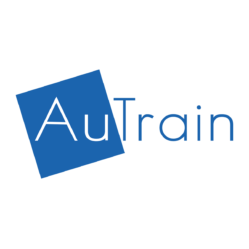11:30 – 12:00
Personal relationships skills (friendships, peers, family) and public and professional contexts communication skills in ASD
Wrap up
Activity: Watch & Reflect 4.3.- 4.4.
Activity: Read & Reflect 4.3.- 4.4.
Activity: Discuss & Reflect 4.3.- 4.4.
References & Resources
Goodbye
#6. Wrap up the session by summarizing and integrating all contents that are related to, and at the same time contribute to the development of personal relationships skills (friendships, peers, family) and public and professional contexts communication skills in ASD.
Note: Present slides number 24 to 28
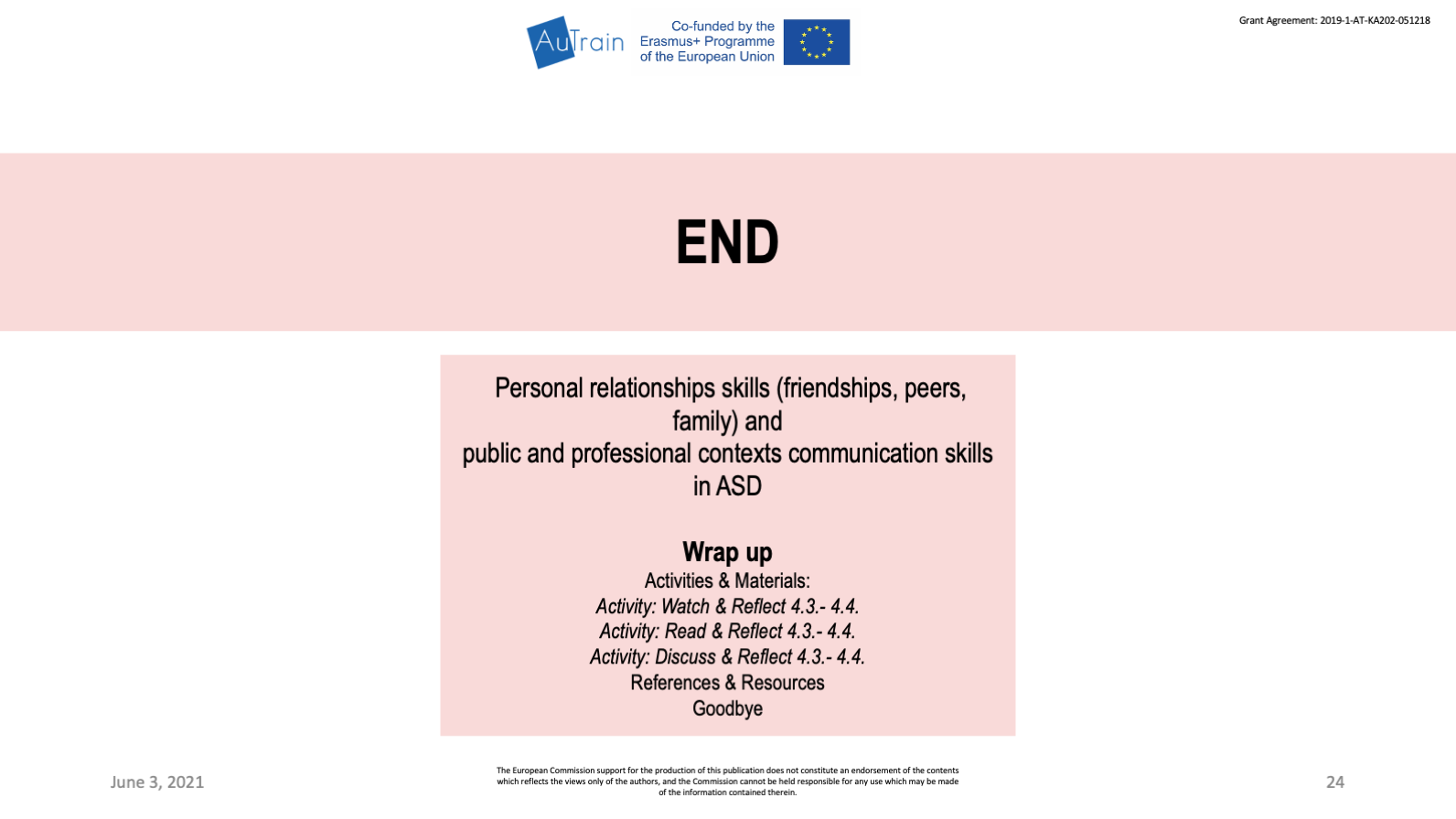
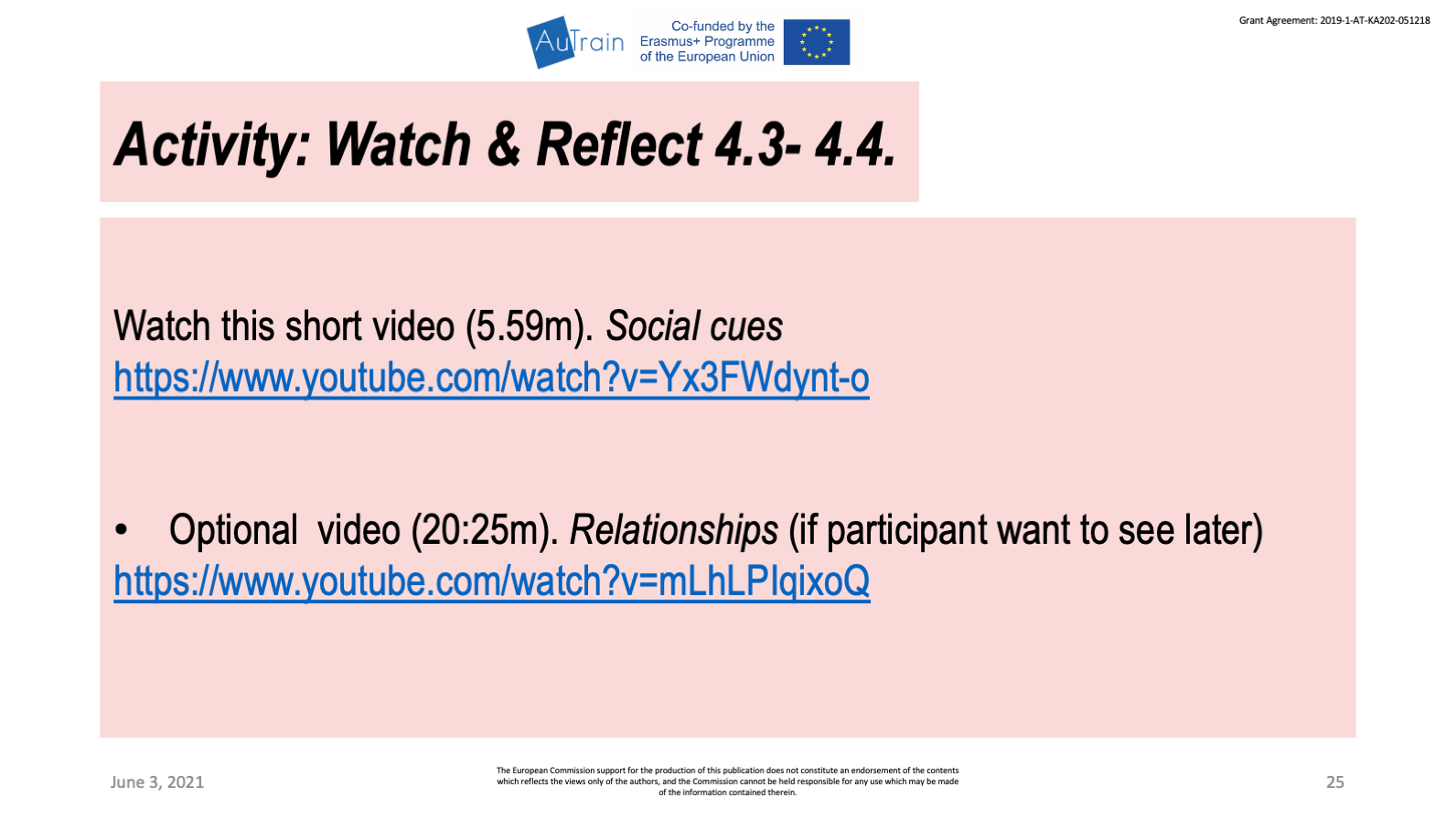
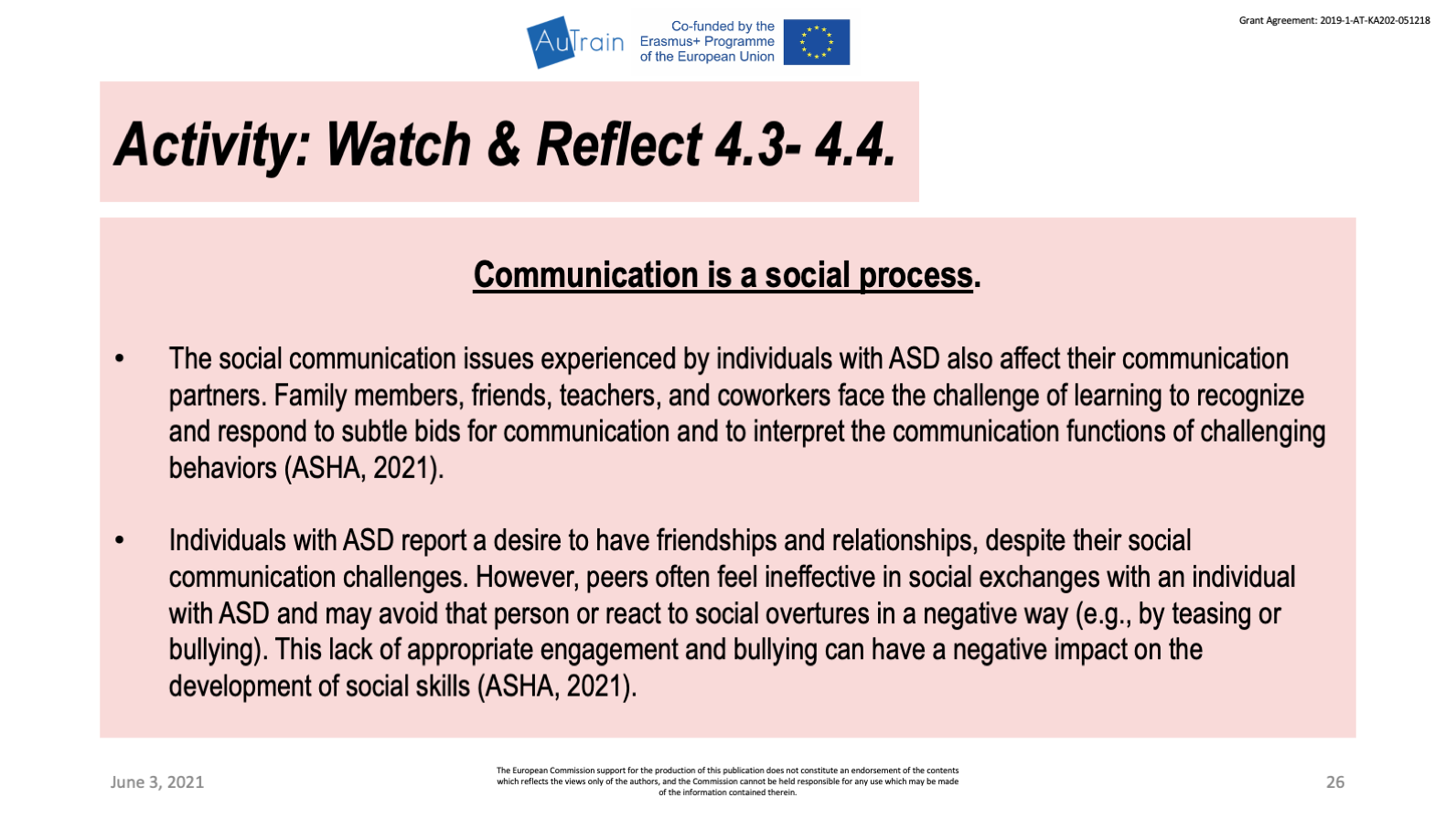
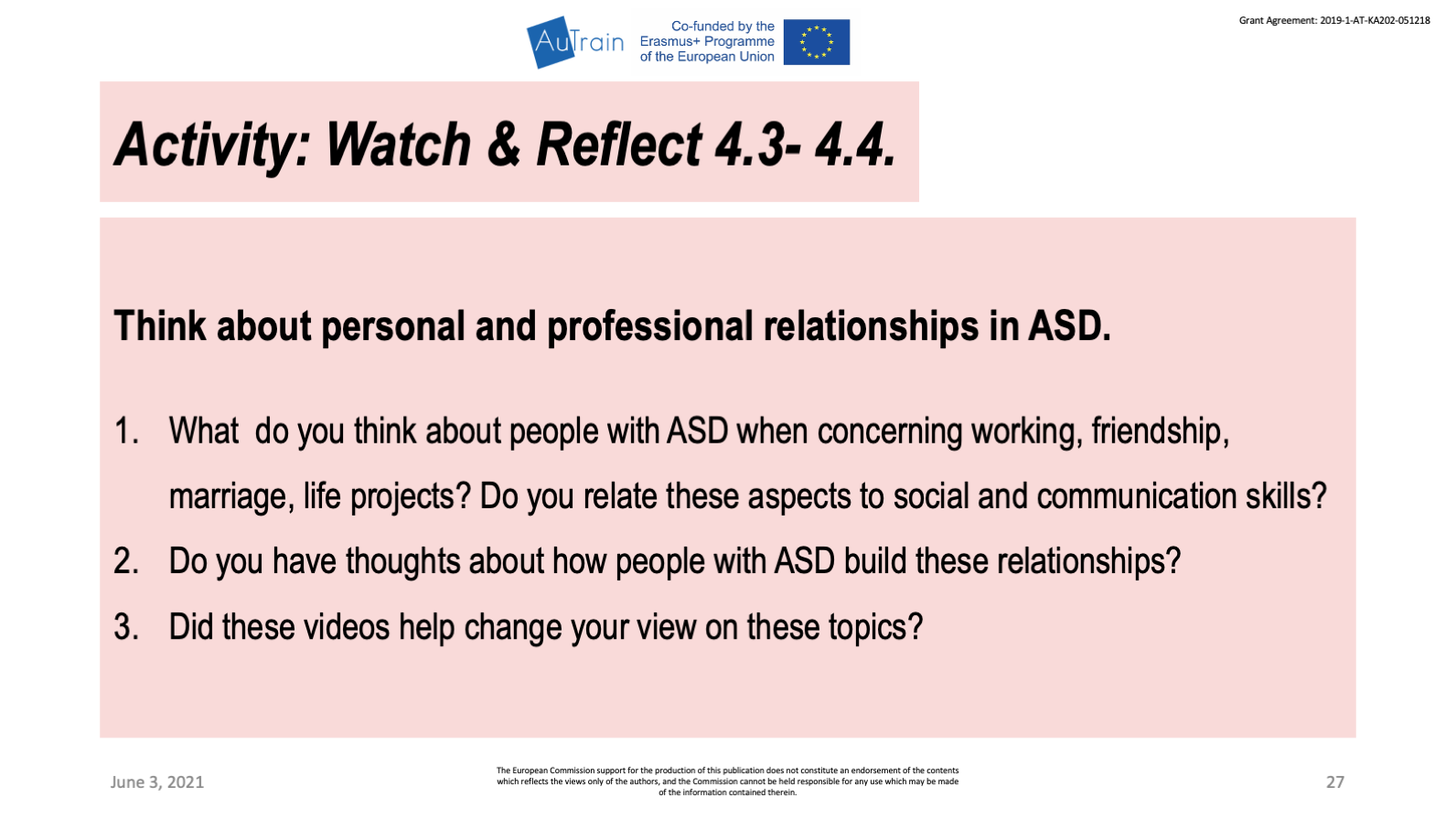
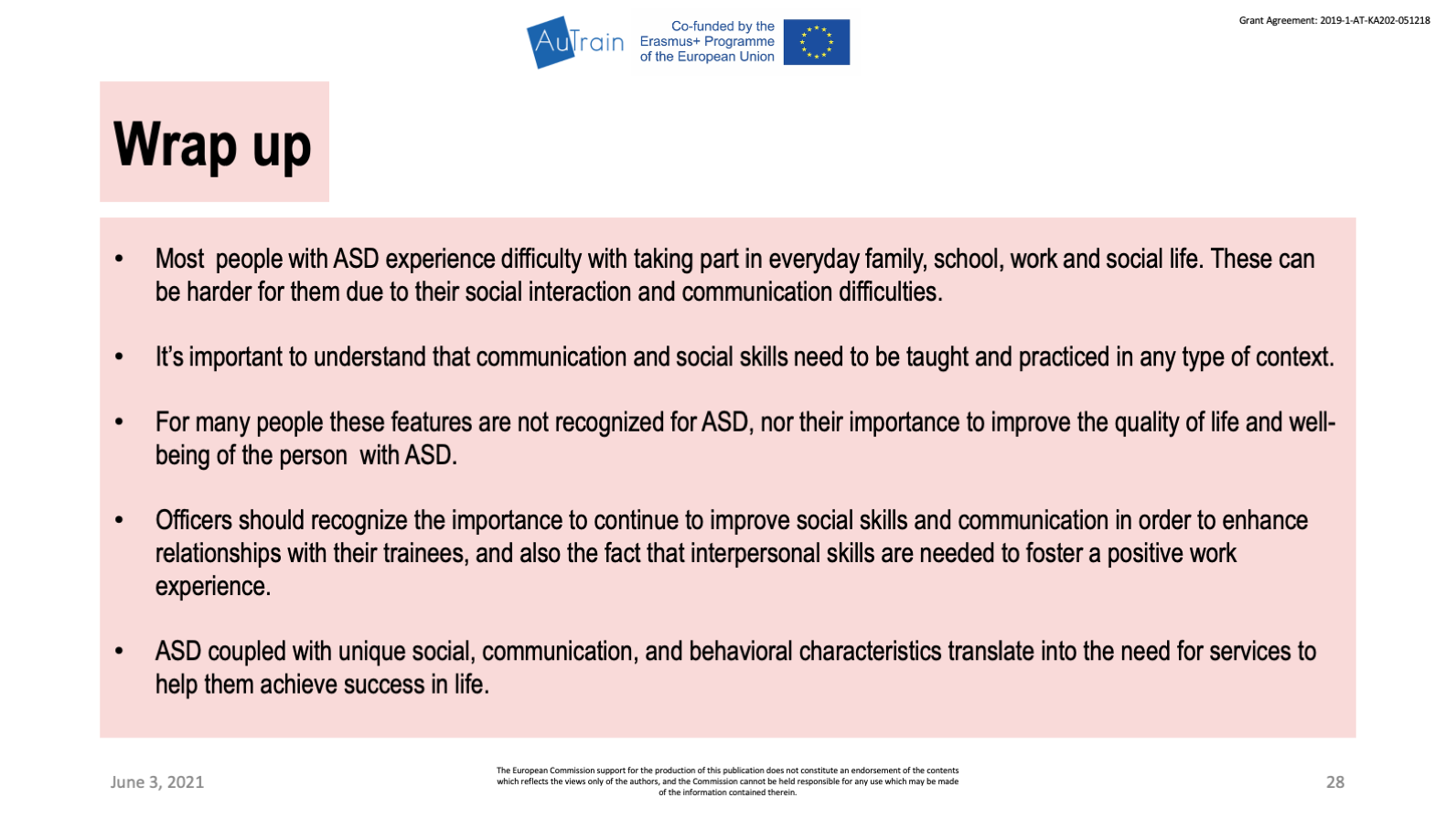
The end of the session of module 4 will contribute to na integrated knowledge of social communciation and social skills when dealing with people with ASD, namely to understand personal relationships skills (friendships, peers, family) and public and professional contexts communication skills in ASD (slides 25, 26 and 27 have integrated activities with short videos, text and questions to help discuss and WRAP UP the SESSION- Module 4.
Introduce all activities of the END
Introduce the material: Activity Discuss & Reflect 4.3 – 4.4 – Think about personal and professional relationships in ASD.
- What do you think about people with ASD when concerning working, friendship, marriage, life projects?
- Do you relate these aspects to social and communication skills?Do you have thoughts about how people with ASD build these relationships?
- Did these videos help change your view on these topics?
Wrap Up
Most people with ASD experience difficulty with taking part in everyday family, school, work and social life. These can be harder for them due to their social interaction and communication difficulties.
It’s important to understand that communication and social skills need to be taught and practiced in any type of context.
For many people these features are not recognized for ASD, nor their importance to improve the quality of life and well-being of the person with ASD.
Officers should recognize the importance to continue to improve social skills and communication in order to enhance relationships with their trainees, and also the fact that interpersonal skills are needed to foster a positive work experience.
ASD coupled with unique social, communication, and behavioral characteristics translate into the need for services to help them achieve success in life.
Ask for questions about the FINAL WRAP UP OF THE SESSION-MODULE 4
#7. Introduce References & Resources, and indicate where participants can find it in the Autrain platform
Note: Present slides number 29 to 30
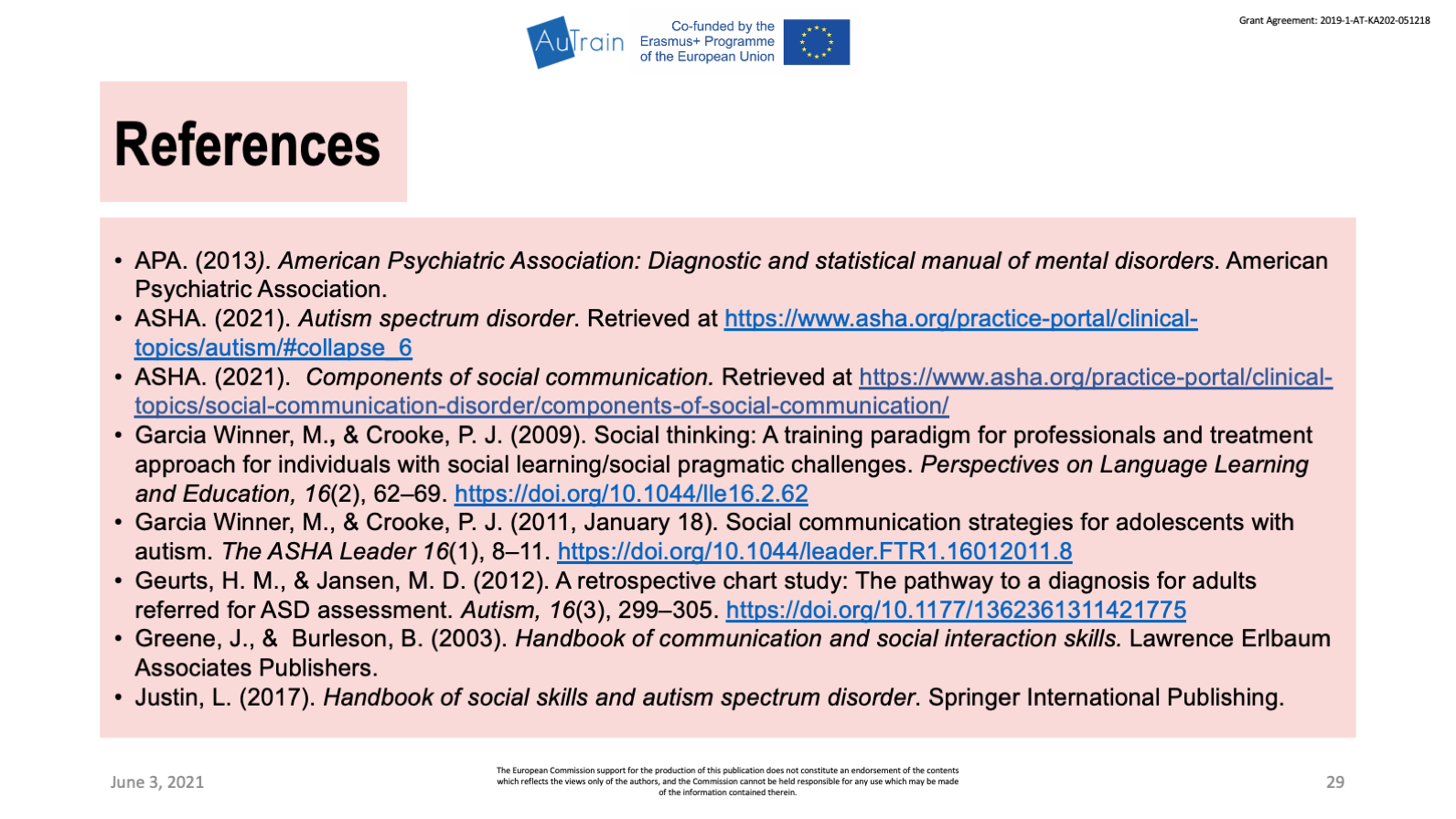
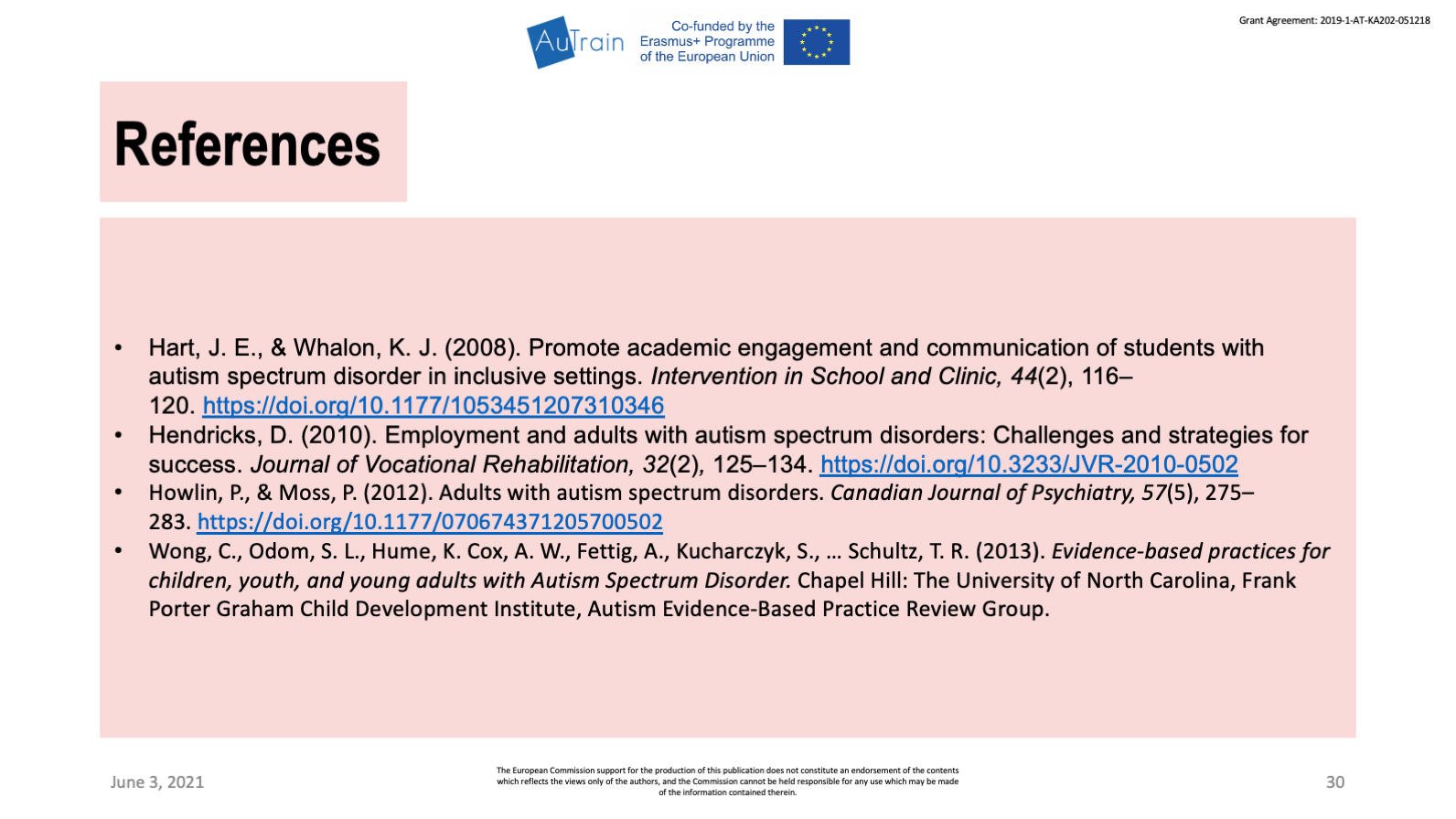
References
- APA. (2013). American Psychiatric Association: Diagnostic and statistical manual of mental disorders. American Psychiatric Association.
- ASHA. (2021). Autism spectrum disorder. Retrieved at www.asha.org/practice-portal/clinical-topics/autism/#collapse_6
- ASHA. (2021). Components of social communication. Retrieved at www.asha.org/practice-portal/clinical-topics/social-communication-disorder/components-of-social-communication/
- Garcia Winner, M., & Crooke, P. J. (2009). Social thinking: A training paradigm for professionals and treatment approach for individuals with social learning/social pragmatic challenges. Perspectives on Language Learning and Education, 16(2), 62–69. https://doi.org/10.1044/lle16.2.62
- Garcia Winner, M., & Crooke, P. J. (2011, January 18). Social communication strategies for adolescents with autism. The ASHA Leader 16(1), 8–11. https://doi.org/10.1044/leader.FTR1.16012011.8
- Geurts, H. M., & Jansen, M. D. (2012). A retrospective chart study: The pathway to a diagnosis for adults referred for ASD assessment. Autism, 16(3), 299–305. https://doi.org/10.1177/1362361311421775
- Greene, J., & Burleson, B. (2003). Handbook of communication and social interaction skills. Lawrence Erlbaum Associates Publishers.
- Justin, L. (2017). Handbook of social skills and autism spectrum disorder. Springer International Publishing.
- Hart, J. E., & Whalon, K. J. (2008). Promote academic engagement and communication of students with autism spectrum disorder in inclusive settings. Intervention in School and Clinic, 44(2), 116–120. https://doi.org/10.1177/1053451207310346
- Hendricks, D. (2010). Employment and adults with autism spectrum disorders: Challenges and strategies for success. Journal of Vocational Rehabilitation, 32(2), 125–134. https://doi.org/10.3233/JVR-2010-0502
- Howlin, P., & Moss, P. (2012). Adults with autism spectrum disorders. Canadian Journal of Psychiatry, 57(5), 275–283. https://doi.org/10.1177/070674371205700502Wong, C., Odom, S. L., Hume, K. Cox, A. W., Fettig, A., Kucharczyk, S., … Schultz, T. R. (2013). Evidence-based practices for children, youth, and young adults with Autism Spectrum Disorder. Chapel Hill: The University of North Carolina, Frank Porter Graham Child Development Institute, Autism Evidence-Based Practice Review Group.
Helpful resources
Note: Present slides number 31 to 32
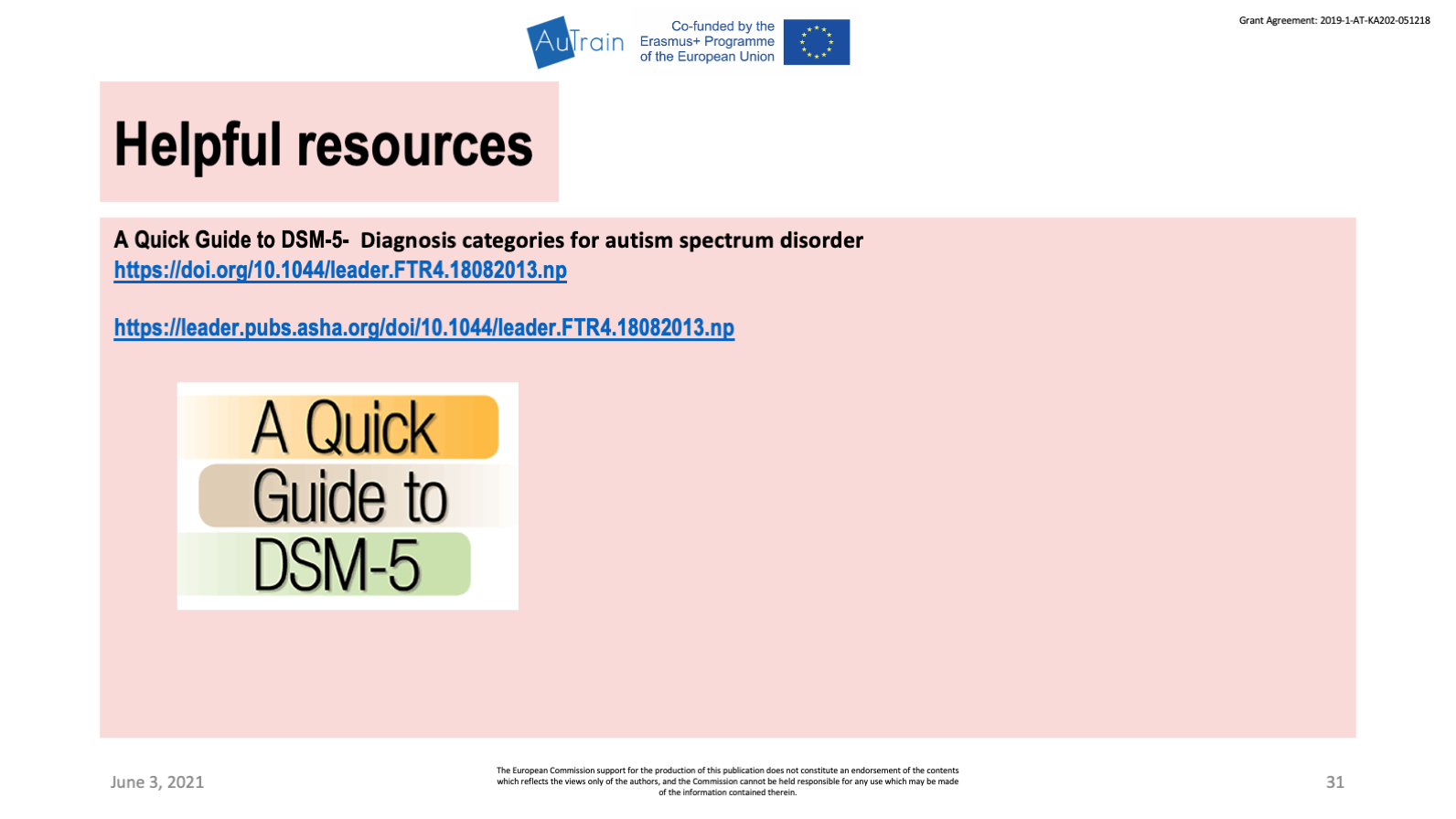
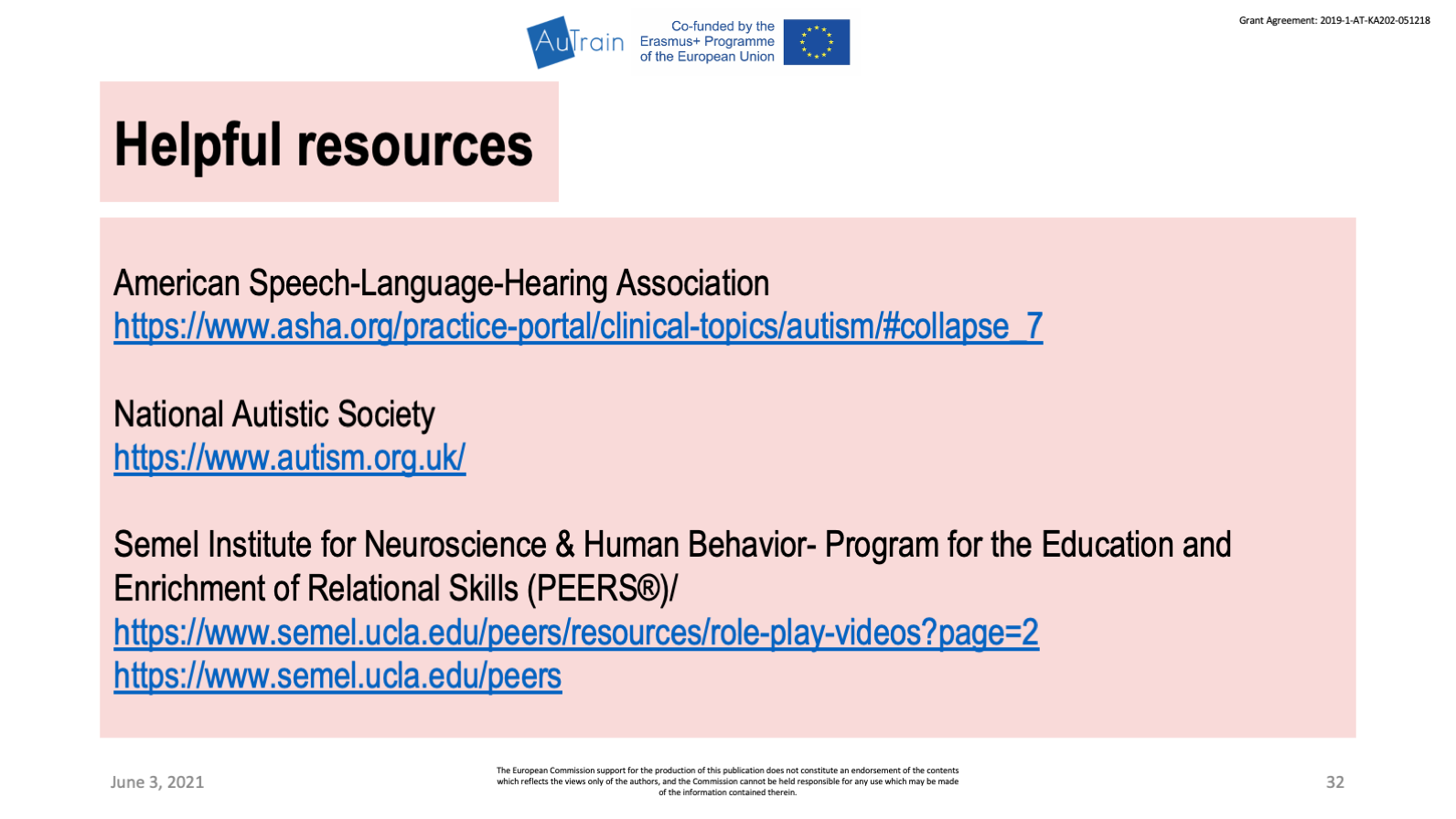
- American Speech-Language-Hearing Association: https://www.asha.org/practice-portal/clinical-topics/autism/#collapse_7
- National Autistic Society: https://www.autism.org.uk/
- Semel Institute for Neuroscience & Human Behavior- Program for the Education and Enrichment of Relational Skills (PEERS®)/ www.semel.ucla.edu/peers/resources/role-play-videos?page=2
- https://www.semel.ucla.edu/peers
- Autrain platform: Front Page
#8. Questions? Goodbye & Thanks for coming
Note: Present slides number 33 to 34
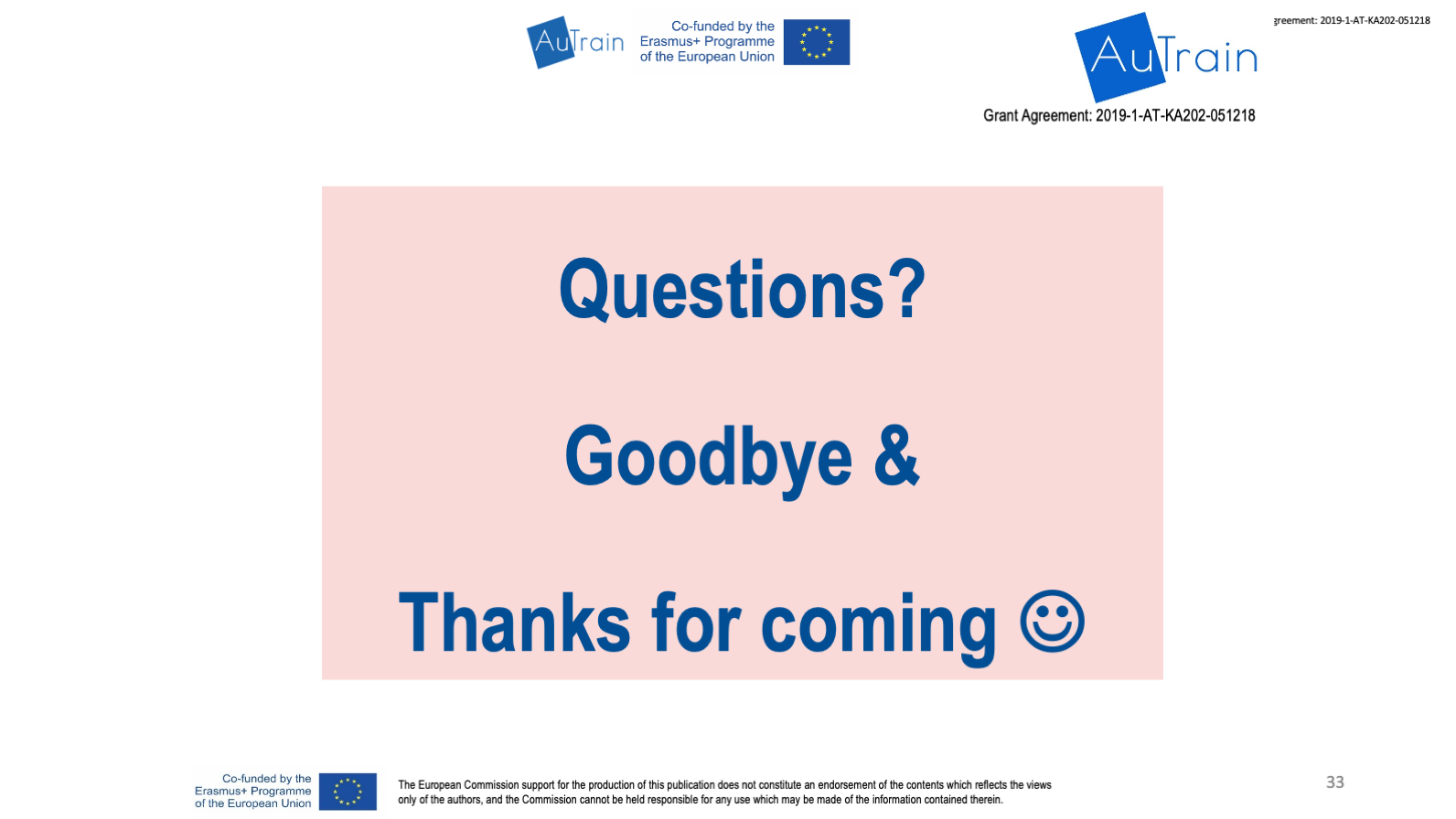
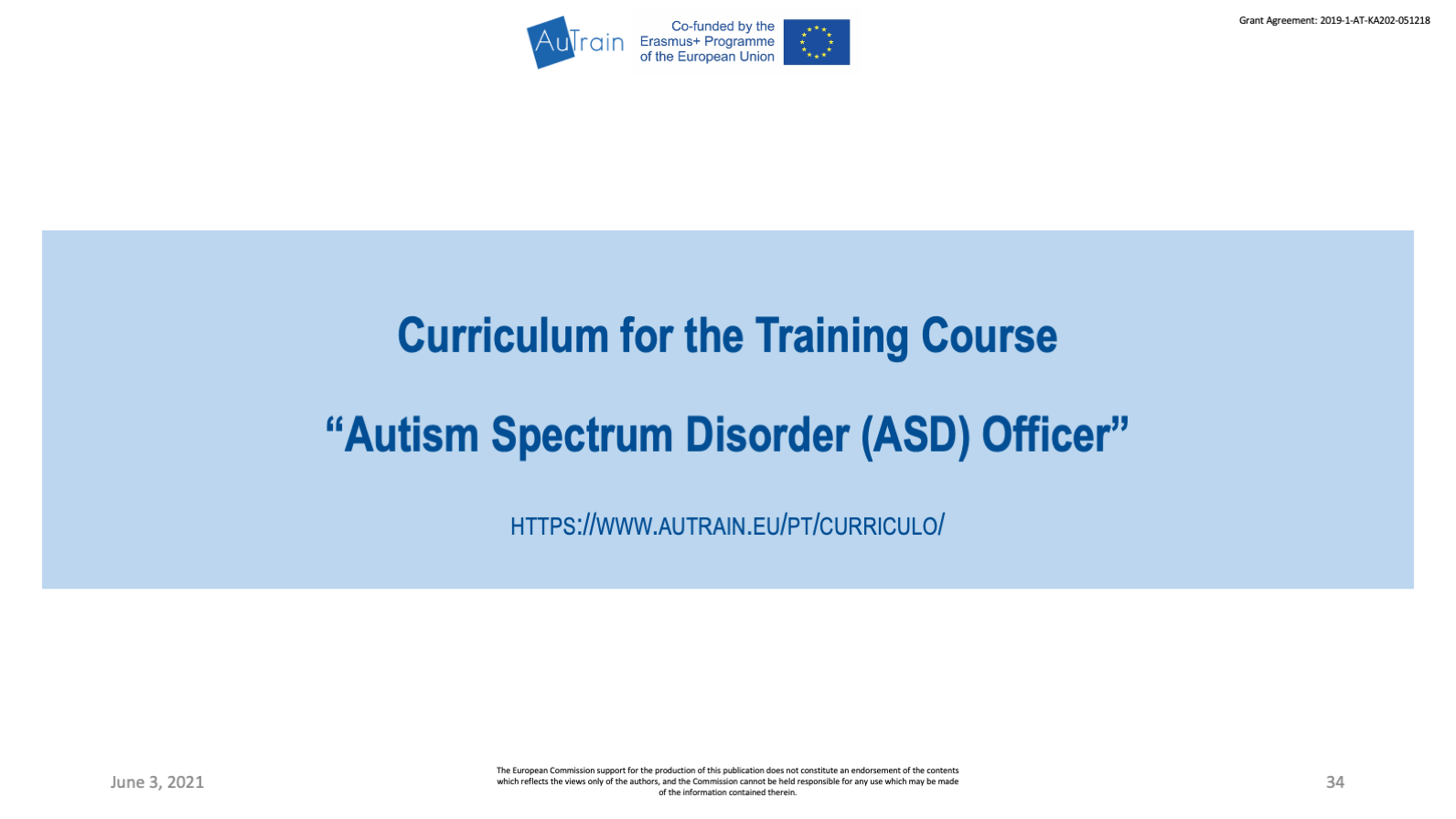
Ask for any question participants may have. As you intentionally say goodbye, give participants a sense of purpose through making meaning of their hardships and accomplishments within the module. Empower them by reminding them of the skills and strengths they possess now about competencies and skills when dealing with people with ASD.
Reflection
In the end of the module write a reflection on what occurred during the process. Concerning the participants’ learning, the activities, the organization, etc.
